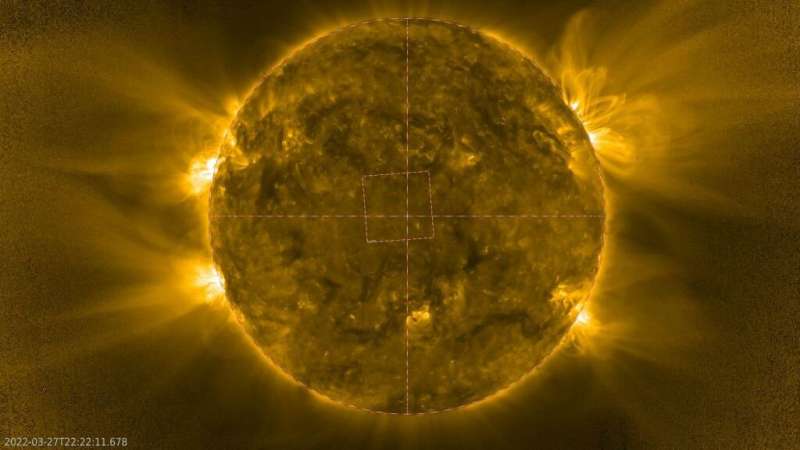This is one of the new images of the Sun from the ESA's Solar Orbiter's closest approach on March 26th, 2022. Credit: ESA
Astronomers have proposed a concept mission to fly a neutrino observatory into orbit around the sun to get a better picture of what's happening in the sun's core.
Astronomers have very few tools to peer into the heart of the sun. Thankfully, the nuclear reactions constantly happening in the core of the sun as it fuses hydrogen into helium release a non-stop flood of neutrinos. Neutrinos are tiny ghost-like particles that hardly ever interact with matter.
On the Earth we have built giant detectors to catch the occasional neutrino. Astronomers have used those neutrinos to understand the nuclear processes happening inside of the sun and to probe the edge of known physics.
But our observatories on the Earth are fundamentally limited because our planet is so far away from the sun. So what if we brought a neutrino observatory into space?
A team of astronomers have proposed a concept mission to do exactly this. The main advantage of putting a neutrino observatory in space is the ability to get up close and personal with the sun itself. If we were to fly the observatory at the same distance as the Parker Solar Probe, it would encounter more than a thousand times more neutrinos then the same detector would on the Earth. Getting even closer to the sun could bring that number up over 10,000 times.
That kind of neutrino flux would give unparalleled views into the nuclear processes of the core. And by orbiting around the sun, the spacecraft would gain another advantage by looking for any asymmetries or differences in the sun's neutrino output, which would be a hint to the presence of dark matter or other exotic processes.
The spacecraft wouldn't even have to get close to the sun to take advantage of all that space has to offer. The gravity of the sun bends the path of light, and that light meets at a focal point that is hundreds of AU away. The paths of neutrinos also bend around the sun, but because they have mass that focal point is just 20-40 AU away. Placing a neutrino observatory there would allow astronomers to use the sun as a magnifying lens to study the origins of neutrinos coming from the galactic center and beyond.
On the downside, a neutrino observatory in space would require layers of thick shielding to block out cosmic rays in other high energy particles that could mimic a neutrino signal. Putting that much weight into space would certainly be a challenge.
Currently the mission is just a concept, but if it works it could provide a new platform for understanding not just these tiny particles but also the physics of the sun itself.
Provided by Universe Today
























